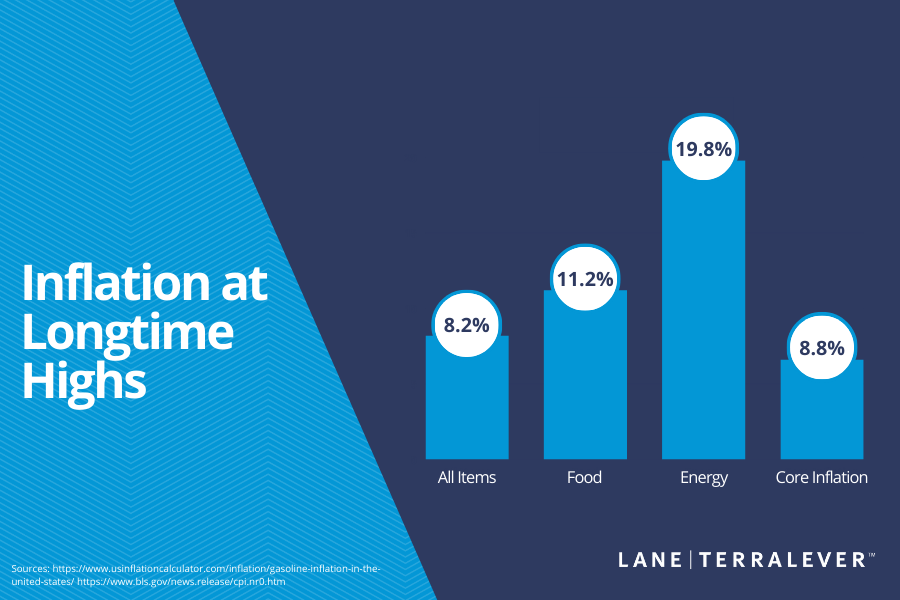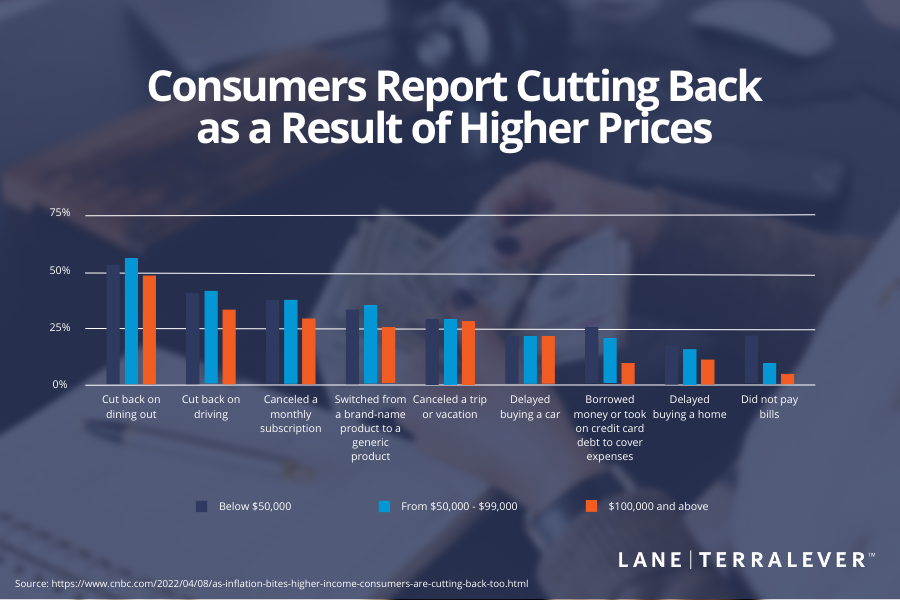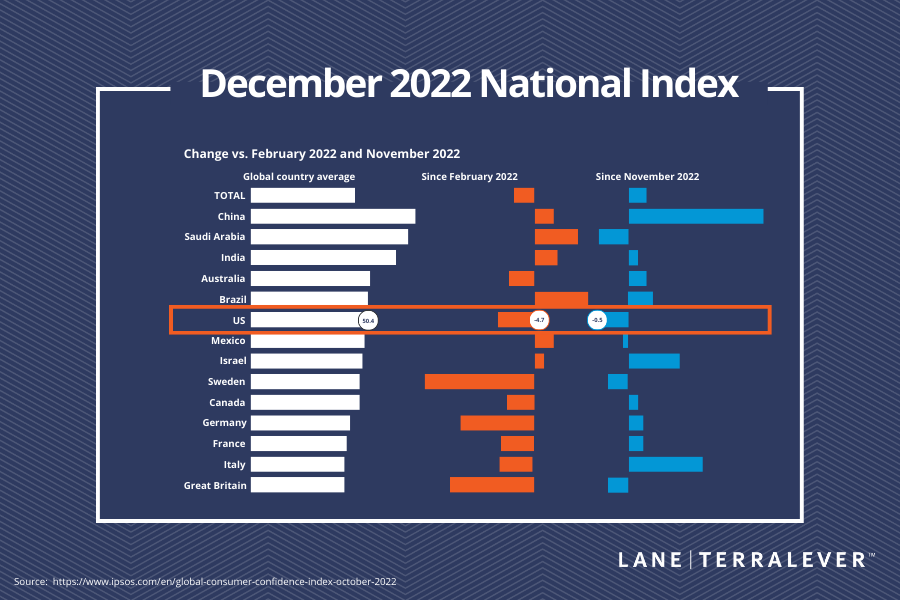Alarm bells about a potential recession have been ringing for months, and inflation remains at decades-long highs. Consumers who fear recessions tend to save rather than spend, and inflation causes consumers to focus their remaining spending more on essentials and less on discretionary items and experiences. They have more significant concerns like paying their mortgage or making sure they can afford their car payment. They do what they can to protect against loss of future income.
These belt-tightening behaviors drive many marketers to cut back on communications or even go dark, in an effort to weather the storm. It makes perfect sense to want to save your bait for when the fish are biting. But what if decades of studies from around the globe show that the companies who stay in front of prospective customers come out of a recession more profitable than their peers? Those studies exist, and they show that it’s almost always better in the long term to resist making deep cuts that feel beneficial in the short term. In fact, during times of economic stress, it is more important than ever to engage with your most loyal consumers. Being strategic with marketing dollars allows a brand to continue the conversation in a tight market.

The State of the Economy Today: Across-the-Board Inflation
Marketing seems like an “easy” expense to cut when compared to fixed costs like payroll or rent payments. However, history shows that companies that maintain marketing spending bounce back more substantially when the economy improves. Let’s look at some of the economic trends that are occurring during these recent times.
With economy-wide inflation running at 10 percent (as of 2022), its fastest pace in 40 years, consumers are unsettled at the rising cost of everything from groceries to gas. Many consumers are tightening their purse strings in response to the increasing cost of living. Consumers are feeling the pinch, and many are rethinking their buying behaviors as a result — by cutting back on their overall expenditure, reducing spending on non-essential items, and switching from premium products to lower-priced own-brand items.

Meanwhile, Consumer Confidence is Faltering
Consumer Confidence is a significant driver of discretionary spending, often outweighing the effects of pricing and promotion. And that confidence is struggling:
So What Should Businesses Do During an Economic Downturn?
The truth is, if businesses are able to continue spending on marketing, there are huge opportunities created by recessions. While competitors hit the brakes on budget spending, uncertain economic times are vital opportunities to gain market share. What should you not do? Slash communications efforts! The Harvard Business Review states that, “As some competitors dial back their spend during the turndown, advertisers who stay the course are likely to realize big benefits. As some players exit the demand pool or sit on the sidelines, the same budget may enable marketers to distinguish themselves from competitors by acquiring short-term volume more effectively or efficiently, with important long-term implications.… For example, a brand that stays front and center during this period will see a lasting impact on organic search results, ensuring it has relevance in the future. This is best illustrated by the ROI Genome Project:
-2.png?width=900&height=600&name=STAT%20(2)-2.png)
Focus on Customer Retention
Most businesses understand that acquiring new customers is more expensive than retaining existing ones. For this reason, businesses should focus on making their existing customers happy and satisfied with the quality of the services and products delivered. Brands should create and implement a seamless buying experience and offer services that will keep their customers coming back, even during an economic recession. When businesses provide a seamless experience to their customers, they will most likely prefer them over their competitors. When customers are happy with a business, there is a high chance that they will come back to purchase the same products or services. This is why it is important to ensure that customers get what they want at the right time. After all, repeat purchases are a great way to keep a business running even during an economic crisis.
Improve (or Maintain) Customer Experience
At its core, customer loyalty is based on the value of the customer experience (CX) a business provides. That means it is imperative that companies implement best practices to ensure they provide a consistent and excellent customer experience every time. When customers get a great experience in tough times, they’re more likely to remember, trust, and reward the businesses that deliver in good times and bad. In fact, a great customer experience ensures that businesses not only hold their own in a recession but also thrive in an economic boom. Being customer-centric causes a ripple effect, and allows businesses to reap the benefits for many years to come.
Stay Consistent
During a recession, making any significant changes to a marketing strategy can be a bad idea. Don’t use a recession as an opportunity to rebrand or make any significant changes to your company’s business model. Making significant changes is unlikely to bring in new customers; it will likely just confuse the current customer base and cause businesses to lose sales. Instead, focusing on staying consistent with what you’re already doing can help businesses thrive. Recessions don’t last forever, so the main goal should be to remain in business once it’s over.
If Ad Spend Must be Reduced, Use Other Levers to Remain Visible:
Prioritize Customer Experience and Leverage First-Party Data
Now is not the time to let customers be chased away. Don’t let cost-cutting measures get in the way of driving positive Customer Experience. Use the data you already have to identify the best customers to retain, and those who may have defected. Use your agency or an established DSP to find others who may look like your best users and run highly targeted, efficient campaigns to keep your brand top of mind with them.
Use Owned Assets to Communicate Crucial Information
Use owned channels such as social, SMS, email, and even direct mail to communicate and persuade.
Consider PR and Partnerships to Generate Earned Media
Find ways to leverage existing event coverage or promotional partnerships to extend your reach in “free” media. Labor and licensing costs are involved, but the coverage can be priceless.
Focus Limited Resources on Key Selling Seasons
The old saying “fish when the fish are biting” applies here. As marketers, we love to drive demand in lower seasons, but now may not be the time. If you must, sacrifice investments in the off-season, and leverage peak selling seasons to retain customers and acquire new ones.
When the economy softens, sales and growth take hits too. This obviously has a direct effect on revenue. Viewing all communications channels as costs that can be cut is tempting and common, but those who resist the urge, or who find temporarily less expensive ways to educate future customers will find themselves more profitable in the long run.




